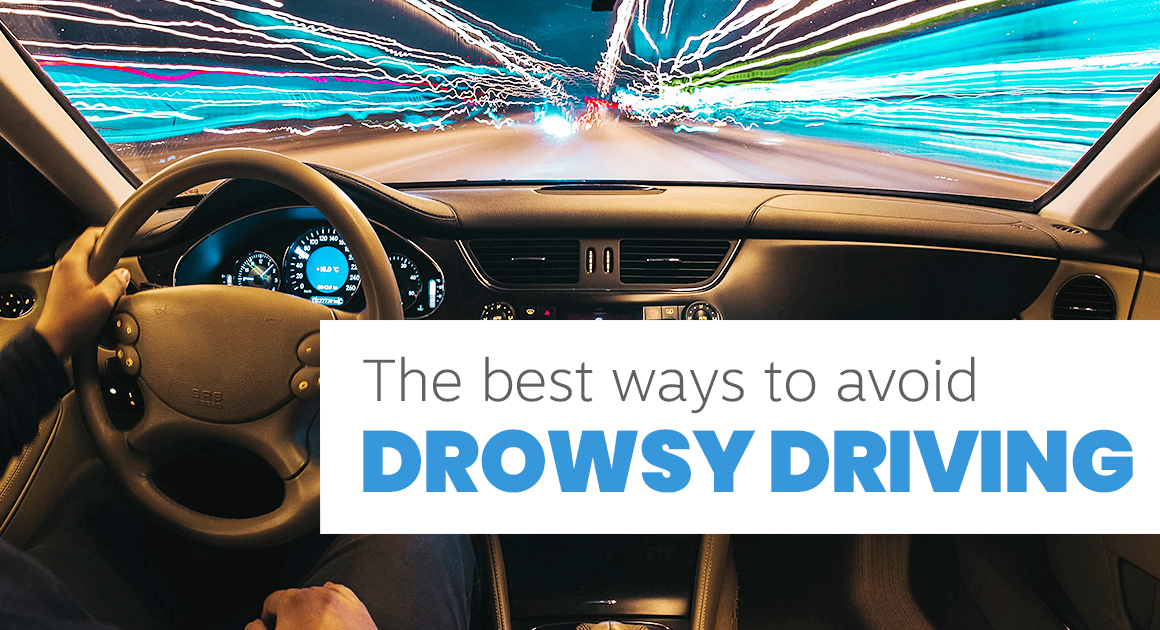Drowsy driving occurs when a driver is too tired to remain alert to their surroundings. As a result, a driver may have slower reaction times, weave in and out of their lane or onto a rumble strip, or the worst-case scenario, fall asleep behind the wheel, and lose complete control of the vehicle. According to the National Highway Traffic Safety Administration (NHTSA), drowsy driving is the cause of nearly 1000,000 accidents and approximately 1,500 deaths annually, (nhta.org).
Understanding the best ways to avoid drowsy driving begins with understanding drowsy driving facts and risks.
Drowsy Driving Facts:
- A survey completed by the CDC reported that an estimated one in 25 adult drivers’ reports having fallen asleep while driving. Unless a driver admits to being drowsy or falling asleep, drowsy driving is hard to detect after an accident.
- Accidents related to drowsy driving are most common early in the morning or late at night during an adult’s natural sleep period. Older adults are more likely to experience drowsy driving in mid-afternoon.
- Speed is not always a factor in deterring drowsy driving-related accidents. Accidents occur at both high rates of speed as well as slower speeds.
Risks:
- Approximately 70 million Americans have a sleep disorder and those that are untreated, such as sleep apnea or undiagnosed narcolepsy are at the greatest risk of falling asleep behind the wheel.
- According to the American Academy of Sleep Medicine. young men in their teens, ’20s, and ’30s are the most common group involved in drowsy driving-related accidents between the hours of 11 p.m. and 8 a.m.
- Shift Workers: People who work rotating or overnight shifts are at the highest risk for drowsy driving after their shift is over. This includes nurses, doctors, pilots, truck drivers, and police officers to name a few.
Warning Signs:
Most drivers can feel when they are tired, but a few warning signs include:
- Frequent yawning
- Nodding off
- Frequent blinking or inability to keep eyes open
- Missing an exit or turn
- Drifting to another lane or onto the rumble strip
The Best Ways to Avoid Drowsy Driving:
Rolling down the window and turning up the radio are not the best ways to avoid drowsy driving. Instead, try:
- Avoiding driving late at night or alone
- Get a full seven to eight hours of sleep before a long road trip
- Pull over at a well-lit rest stop or parking lot and take a short nap if possible
- Use caffeine as a short-term boost until you can arrive safely at your destination
- Arrange or plan to rideshare after late-night shift work
- Avoid drinking alcohol or taking medications that you make you sleepy
- Visit your doctor if you experience sleep apnea or other sleep deprivation related disorders
Car accidents related to drowsy driving occur daily. While being a rested and cautious driver is advantageous, it may not help you avoid the unavoidable with another driver. If you or a loved one has been injured in a car accident, you may be able to recover your losses.
Contact Reginald Keith Davis, Attorney at Law, Dependability You Can Trust.

